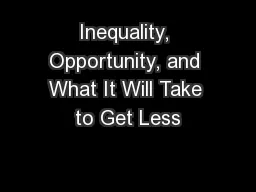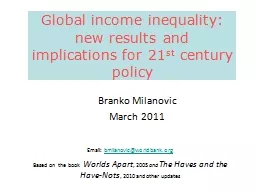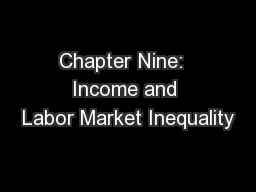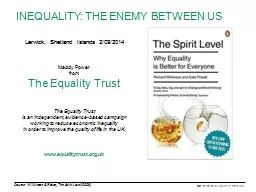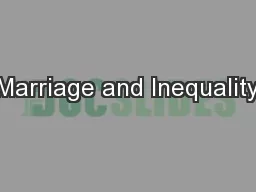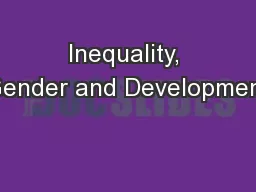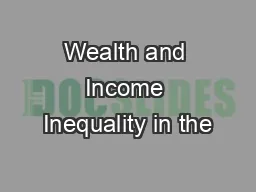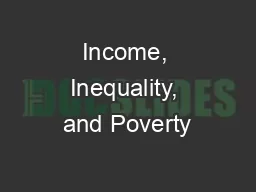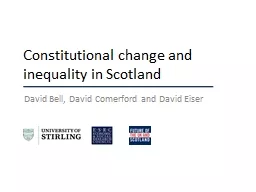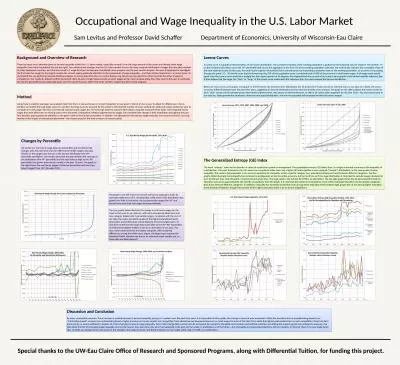PPT-Inequality, Opportunity, and What It Will Take to Get Less
Author : natalia-silvester | Published Date : 2016-05-21
Jared Bernstein CBPP Seattle WA Washington State Budget and Policy Center 121213 Current Events Where Are We EconomyWise Getting better doesnt mean youre healed
Presentation Embed Code
Download Presentation
Download Presentation The PPT/PDF document "Inequality, Opportunity, and What It Wil..." is the property of its rightful owner. Permission is granted to download and print the materials on this website for personal, non-commercial use only, and to display it on your personal computer provided you do not modify the materials and that you retain all copyright notices contained in the materials. By downloading content from our website, you accept the terms of this agreement.
Inequality, Opportunity, and What It Will Take to Get Less: Transcript
Download Rules Of Document
"Inequality, Opportunity, and What It Will Take to Get Less"The content belongs to its owner. You may download and print it for personal use, without modification, and keep all copyright notices. By downloading, you agree to these terms.
Related Documents

